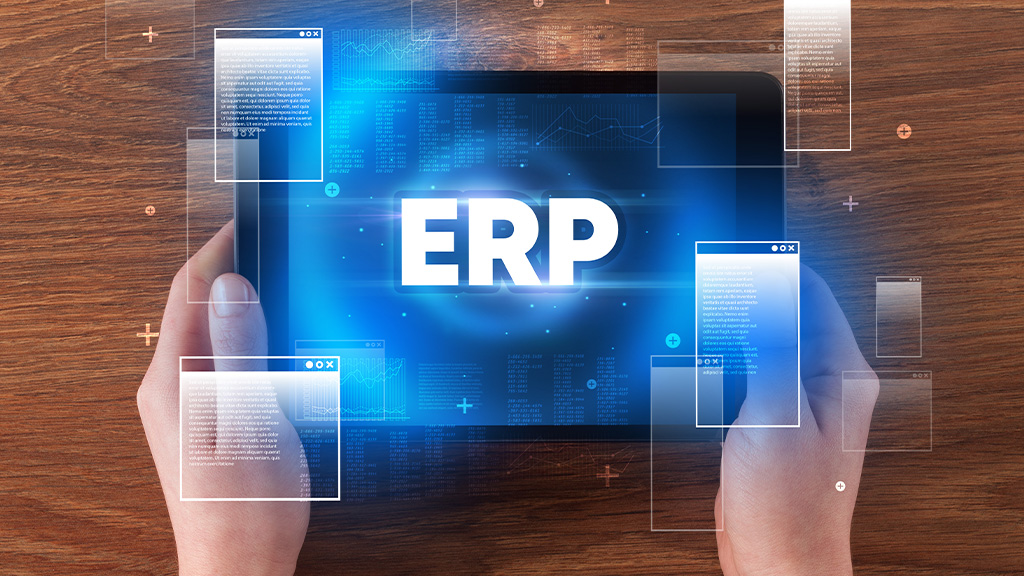As businesses grow and expand, administrative responsibilities increase as well. With this growth come certain challenges, one of the most pressing being operational inefficiencies caused by data scattered across multiple disconnected systems. This lack of integration can lead to delays, errors, and difficulties in decision-making as teams struggle to access and manage critical information in a unified way.

An ERP system addresses these challenges by serving as a central database, consolidating disparate systems into a unified platform. This integration streamlines data management, enhances visibility across departments, and optimizes business processes, resulting in improved efficiency and better decision-making.
Implementing an ERP system can have a profound impact on a business’s success. Studies show that 95% of companies adopting ERP systems reported improved business processes. These statistics highlight the importance of making the right decision when it comes to an ERP system. Unlike in the past, ERP systems are no longer restricted to large manufacturing companies. Today, small and medium businesses across various industries, such as retail, telecommunications, professional services, the public sector, and distribution companies, are increasingly adopting this solution. On top of this trend is AI in ERP, further transforming traditional ERP solutions.

Integrating an ERP system into your business fabric can provide these amazing benefits. In fact, ERP systems can be applied to almost all major areas of business management and operations, making them an incredibly versatile tool for improving your organization’s overall efficiency and effectiveness.
ERP implementation presents its own set of challenges. Beyond the complexity of selecting the right ERP system, businesses also face the critical task of choosing the right ERP implementation partner. Without proper alignment between the ERP solution and the company’s specific needs or long-term goals, businesses often experience inefficiencies, underutilization, or even failed ERP implementations. To avoid these pitfalls, conducting a thorough evaluation process and fully understanding the organization’s requirements before committing to an ERP solution and partner is essential.
When it comes to mid-market ERP solutions, Microsoft Dynamics 365 and SAP are two of the leading players. Both offer a wide range of features and benefits that can help businesses overcome the challenges of scaling and expansion. So, here we are with the Microsoft Dynamics 365 vs. SAP debate. So, without further ado, let’s dive in…
Microsoft Dynamics 365 vs. SAP: A quick overview

Microsoft Dynamics 365 and SAP are two of the market’s most widely used enterprise resource planning (ERP) software systems. While both systems offer similar functionalities, they differ in features, pricing, implementation time, and customization options.
Microsoft Dynamics 365 is a cloud-based ERP system that offers a wide range of functionalities such as financial management, supply chain management, project management, and human resource management. Built on the Microsoft Azure platform, it is known for its easy integration with other MSFT tech-stack, such as Office 365 and Power BI.

Additionally, leveraging the latest advancements in Generative AI, Microsoft has introduced Dynamics 365 Copilot within its ERP and CRM solutions. This innovative tool automates repetitive tasks, accelerates innovation, and enhances business outcomes across all departments. Copilot in Dynamics 365 is empowering organizations to focus on strategic initiatives and drive greater efficiency in their processes.
Explore Microsoft Dynamics 365 Copilot in action:
SAP has been in the market for over 40 years and is known for its robust functionalities and high level of customization. It offers multiple solutions, such as SAP S/4HANA, SAP ERP, SAP Business One, and SAP Business ByDesign, which you can choose based on your business needs.
As we explore which ERP is best for your business, here’s a comparison table highlighting the key features of the SAP ERP system and Dynamics 365 ERP to make the decision easier:

Microsoft Dynamics 365 vs. SAP: Pricing
Microsoft Dynamics 365 offers a subscription-based pricing model allowing users to pay for only the necessary modules. This makes it an affordable option for small and medium-sized businesses requiring only a few functionalities.
However, SAP offers a more complex pricing structure based on the number of users, modules, and customization required. As a result, SAP can be expensive for small businesses, and the implementation costs can be high.
In summary: While Microsoft Dynamics 365 may offer a more straightforward and cost-effective pricing model, SAP’s pricing complexity could result in higher costs for smaller businesses, especially when extensive customization is needed. Contact us for detailed insights into Dynamics 365 pricing and functionality.
Microsoft Dynamics 365 vs. SAP: Functionality and features
Microsoft Dynamics 365 and SAP are packed with functionalities. Dynamics 365 is a comprehensive suite that integrates ERP (Dynamics 365 Finance and Operations) with CRM (Dynamics 365 Customer Engagement) applications. This unified platform enables organizations to streamline their business processes and enhance customer interactions across various functions.
- Explore Dynamics 365 Finance and Operations for an in-depth look at its capabilities.
- Learn why Dynamics 365 is an ideal CRM for Fortune 500s and discover how it supports large enterprises in achieving their goals.
SAP, on the other hand, has a more robust set of functionalities than Microsoft Dynamics 365. In addition, SAP is known for its ability to handle complex business processes and offers a wide range of industry-specific solutions.
In summary: The best choice depends on a business’s specific needs. While SAP excels in depth and complexity, Dynamics 365 offers ease of use and quick deployment.
Microsoft Dynamics 365 vs. SAP: Customization
Microsoft Dynamics 365 offers an elevated level of customization by allowing its users to customize the system to meet unique business needs. Microsoft Dynamics 365 also has a large community of developers who can help users with customization. The platform offers a user-friendly interface that integrates seamlessly with other Microsoft products like Office 365, SharePoint, and Power BI, making it easier to customize and use.
On the other hand, SAP is known for its high level of customization. SAP allows users to customize every aspect of the system, and it has a wide range of tools and resources to help users with customization. However, customization can be expensive and time-consuming, requiring high technical expertise.
In summary: If you need a highly customizable and user-friendly solution that integrates well with other Microsoft products, Dynamics 365 might be the better choice. However, SAP could be more suitable if you require a robust, industry-specific solution and are prepared for a more complex customization process.












